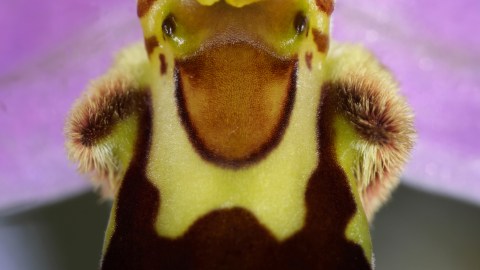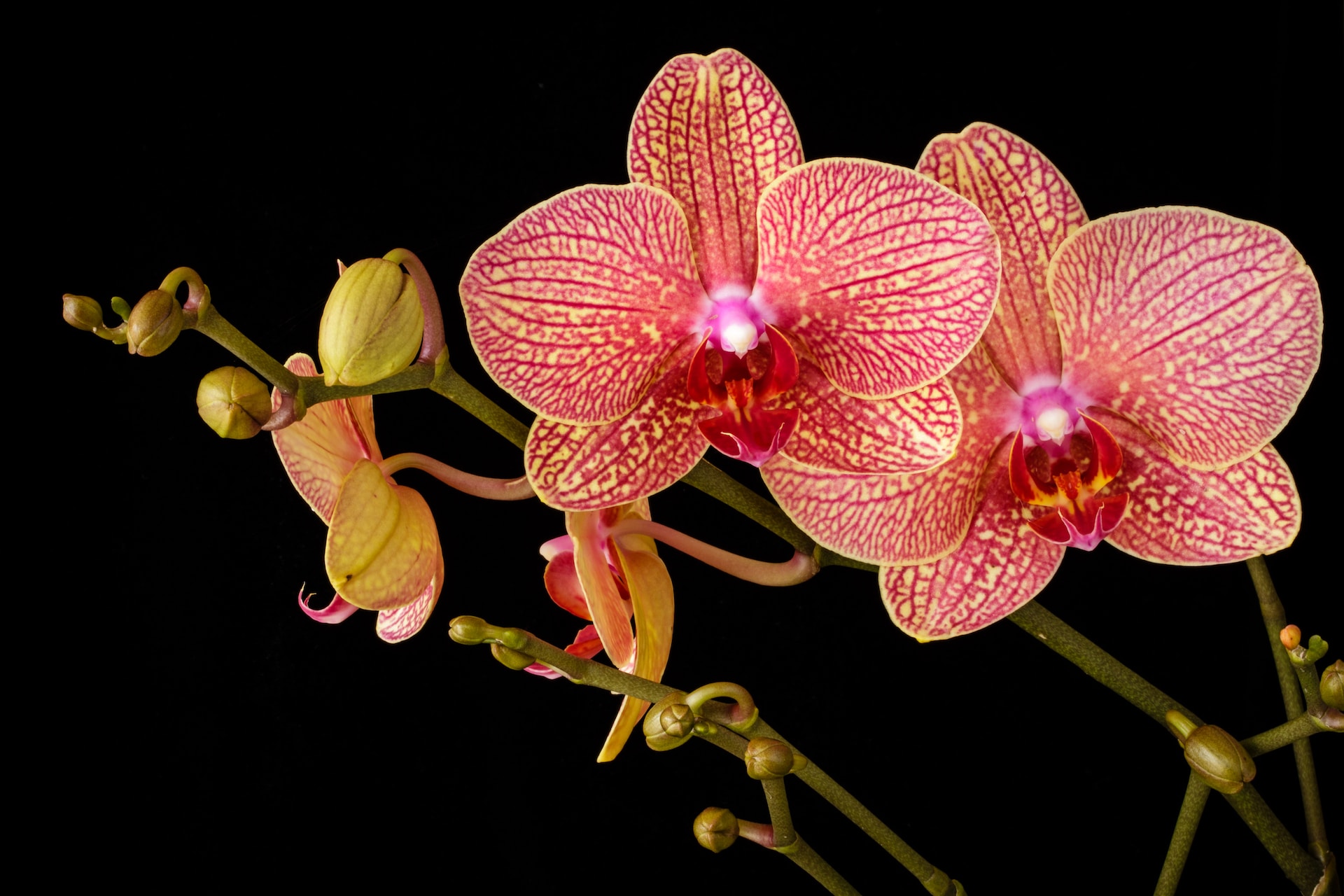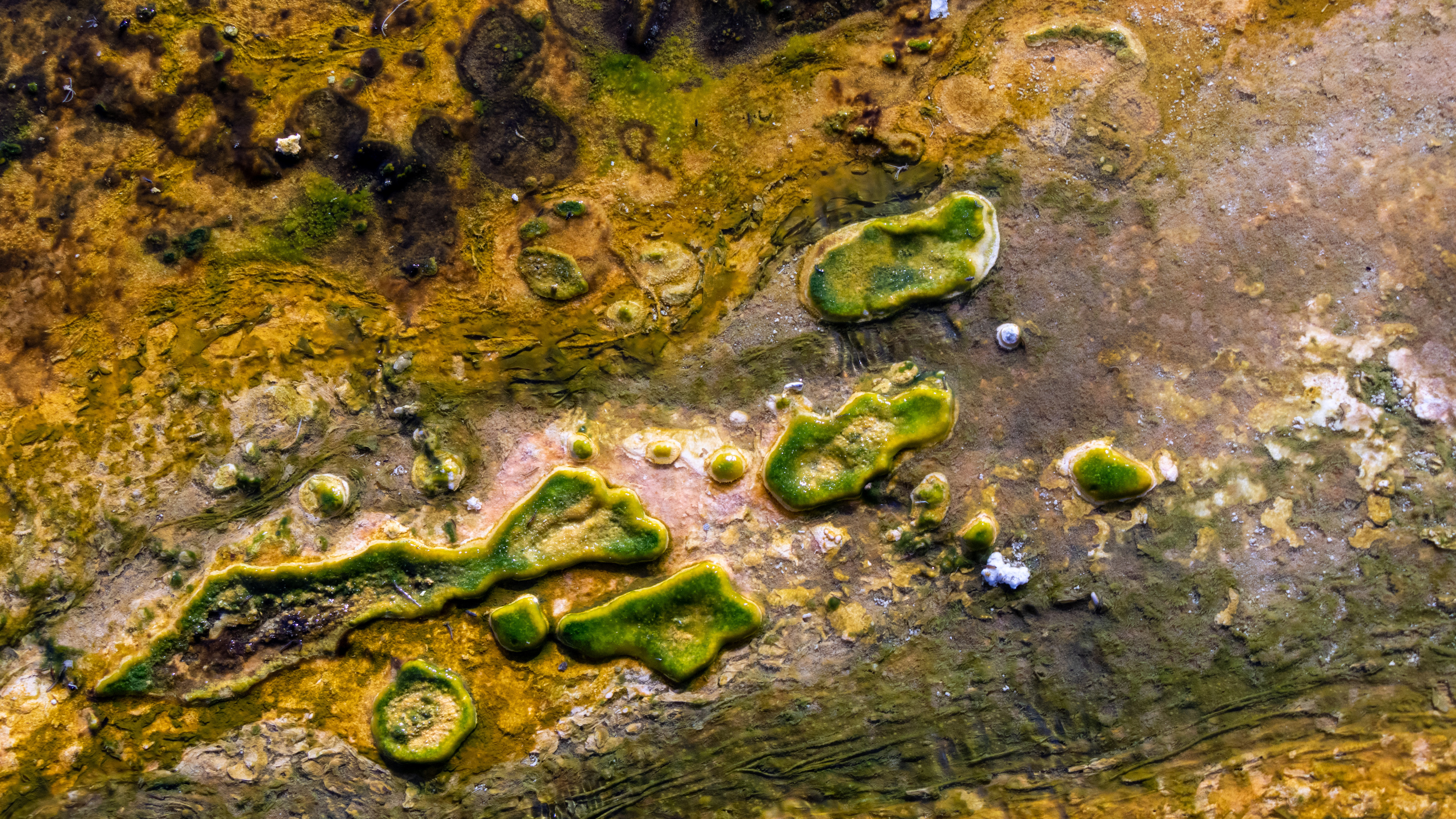Darwin’s “abominable mystery”

After investigating the origin of the species, Charles Darwin lunged into an exploration of something that seemed, by comparison, terribly minute: orchids. By 1862, he’d traveled the world wide and far, encountering incredible organisms like giant tortoises, seafaring iguanas, and fossils of giant ground sloths. But he couldn’t stop thinking about a delicate, white star-shaped flower he’d been sent as a gift by his acquaintance James Bateman, an English horticulturalist with a penchant for rare flora from Madagascar. The flower’s odd shape—with an extremely long nectar pouch hanging under its crown—stirred in him a deep, almost inexplicable fascination.
“Orchids have interested me as much as almost anything in my life,” Darwin wrote. In their forms, he saw a vast landscape of the forces of selective evolution, a dance they played with their environment and their pollinators. “My little darlings,” as he sometimes referred to orchids, became his model for further exploring the forces he so broadly described in The Origin of Species. Just three years after the publication of that shattering work, he had produced his tome puzzling over the multitudinous, striking habits of orchids: On the Various Contrivances by Which British and Foreign Orchids Are Fertilised by Insects, and On the Good Effects of Intercrossing.
How a single family of flowers could vary so widely—from small and frilly, almost invisible to see, to large, gaudy and with a front pouch—left Darwin baffled. He called this, and flower diversity as a whole, an “abominable mystery.” Indeed, there are upward of 28,000 species of orchids worldwide and new ones cropping up every so often—sometimes even right under our noses. They have made their homes on all contemporary continents save for Antarctica—from the Arctic north, across the equator, and reaching south through all but the tip of South America.
“I think the reason people become obsessed with them is because of that mystery: Why are there so many?” says Jamie Thompson, a life sciences researcher at the University of Bath, in the United Kingdom. Yet the scientific jury is still out—and fervently debating—how many species there are exactly, what secret makes them so brilliant at diversifying, and when and where orchids evolved in the first place. Getting to the bottom of these mysteries could help us better understand the evolutionary dynamism of this massive group of alluring plants, and how we might help them fend off upcoming decimation.

To search for answers, researchers have spent decades digging into the orchid’s past. For plants, fossil records are often hard to come by because soft organic matter is less likely to be preserved than, say, bones. To track when a plant first appeared on this planet, experts now tend to rely on phylogenetic profiling: They use DNA from different species to plot them onto a tree of life, and then use a statistical model to pull them back into the past and recreate their history.
When, in 2015, researchers used this technique to sequence 39 species from all major orchid groups, as well as data from some fossils, their findings suggested that orchids originated between 102 and 120 million years ago, most likely in Australia.1 Ancient orchids then spread to the tropics by making their way through Antarctica—which was then connected and flourishing with vegetation. And since then, Southeast Asia is where most of their speciation has taken place.
Darwin couldn’t stop thinking about a delicate, white star-shaped flower.
Or at least, this is currently the leading theory about orchid origins. It may soon be upended, though, according to new preliminary findings.2 An international team of researchers has drafted a study using DNA from more than 1,900 species of orchids and pinpointed their origin north, in Laurasia, modern-day Europe, Asia, and North America. The majority of diversification happened just over the past 5 million years, their work suggests, and southern Mesoamerica, such as the lush Costa Rica and Panama, actually hosts the fastest speciation of orchids.
This paper, posted to a preprint site in September, hasn’t yet been peer-reviewed, and some outside experts don’t think this new hypothesis is any good. But Oscar Pérez-Escobar, the lead author of the study and a researcher at the Royal Botanic Gardens, Kew in the United Kingdom, doesn’t think his findings are controversial at all. “Understanding where things come from can help us understand why we have X or Y species, and why there are so many,” Pérez-Escobar says.
Today, it takes a long logbook to account for orchids’ present diversity of appearances and habits. “There’s quite a number of innovations that orchids can do that other plants can’t, or not so well,” says Katharina Nargar, an orchid researcher at James Cook University, in Australia who contributed to the new study.
The neatest and most helpful of these tricks, according to Nargar, is that more than 70 percent of orchids have developed the ability to grow out of tree trunks and branches instead of soil—a capability known as epiphytism. This allows them to exploit new territories other plants cannot use, giving them “free rein,” says Nargar. Studies suggest that epiphytism evolved independently at least 14 times throughout the orchid family tree, and epiphytic orchids are “significantly richer in species” than terrestrial ones, write the authors of one study of their diversity.3 To successfully live in trees, orchids have developed the ability to absorb moisture from the air via a succulent spongy outer coating on their stem and leaves, as well as to use their roots directly to photosynthesize. The Taeniophyllum orchid, for instance, doesn’t even have any leaves: it just uses its roots for all energy production from the sun.
For the species that haven’t evolved to live in trees, the other main running theory for their inexplicable ability to diversify lies in how specialized their flowers are at getting pollinated. For one, some orchid species are the ultimate swingers—they’re very lenient in their sex lives and can produce fertile offspring with orchids from some other species, making them more likely to reproduce and more likely to often birth unique, new hybrid species, according to Nargar.

To ensure pollination, some orchids also strike up an evolutionary deal with local fauna: The plant evolves a flower so intricate it’s only accessible to a couple types of insects, and those insects are sure to only really ever pollinate other orchids. One of these striking examples is the Angraecum sesquipedale, the orchid Darwin had grown obsessed with, which has evolved a 12-inch long and narrow satchel for its nectar so that only the Hawk moth, with an exceptionally long proboscis, can access it. Although Darwin had already mused on this possibility, the moth hadn’t yet been discovered, so his theory was only confirmed almost four decades later, in 1903.
Some orchids are very lenient in their sex lives.
In order to fine-tune their ability to accommodate just certain pollinators, orchids have also grown very meticulous about how they deliver their pollen gifts. Some orchids bundle their pollen in tailor-made, measured, sticky packages and fling them onto their preferred pollinators with precision so that no grains are wasted and lost along the way once they fly off, and they can only be dislodged once they reach their destination. This push to specialize pollen packaging according to available pollinators—maybe a moth, maybe a bee—has also pushed diversification. And it allows one mutant orchid to have a higher chance of having loads of offspring because less pollen goes to waste than with traditionally dispersed grains. The branch of the orchid family tree that has evolved this trick called “pollinia” has a higher speciation rate than orchids that have stuck with traditional pollen grains.4
To take their specialization a step further, some orchids have evolved to mimic the mate of their preferred pollinator, or their favorite snack through looks, scent, and the release of special chemicals.5Unknowing insects show up on their flower crown hoping to get lucky, and get duped into picking up the flower’s pollen instead. Ophrys apifera orchids look and smell like female bees. The Hammer orchid eerily resembles a female wasp. The Satyrium pumilum orchid, in South Africa, imitates the scent of dead animals to attract fruit flies, while Disa pulchra orchids pretend to be other nectar-offering flowers, like the pink iris, to fool insects into coming looking for a sweet reward. Since bees, wasps, and butterflies alike would clock the ploy if it were too common, it’s possible this has led orchids to vary in their mimetics as much as possible, spurring the birth of so many different species and tactics.
These unique flower morphology strategies are “fundamental,” to diversification according to Dewi Pramanik, an orchid morphology researcher at the Naturalis Biodiversity Center, in the Netherlands. One of her favorites is the Serapias cordigera orchid, which has evolved to shape its hairy, burgundy flower like a comfortable resting place for the Hoplitis adunca male bee, which will conveniently stop to rest there in between bouts of foraging, accidentally pollinating the flower.
Dust-like seeds are also likely among the orchid’s arsenal for rapid diversification. A single orchid seed packet can contain up to 4 million seeds, sometimes as tiny as 0.05 mm in length—the smallest in the plant kingdom—meaning plenty can easily disperse with a single gust of wind. Although most of the dust seeds won’t ever germinate, this tiny seed technique does increase the odds for diversification compared to a plant with a heartier seed bulk because new plants can crop up quickly in new locations without too much energy expenditure, and rapidly adapt accordingly.
Though orchid excellence might not all be down to just tricks pulled by the plants themselves, according to Thompson—there are external factors at play, too. When Thompson ran another phylogenetic statistical analysis on nearly 1,500 species of terrestrial orchids, his data suggested that their diversification “exploded” specifically when temperatures started dropping across the globe, somewhere around 10 million years ago.6 Global cooling is 700 times more likely to have influenced the rate at which orchids speciated than just time alone, Thompson says, making orchids “the best example of climate-driven speciation.”
Unfortunately, this also suggests extra trouble for the challenges orchids will face as the world warms. “I think extinction will increase, because a lot of them are cold-adapted, and we’ve seen in Europe, how hot it’s been this year,” says Thompson. Climate changes also put orchids at additional risk due to their hyper-specializing for one pollinator that might die off or be forced out of their habitat.
Going by their evolutionary history, orchids should continue to proliferate, and we should continue to discover new ones. “If you look at the number of orchid species described against time, it’s not really showing any evidence of leveling off,” according to Thomas Givnish, a professor of botany and environmental studies at the University of Wisconsin-Madison, who penned that seminal Australia-orchid-origin research. But human-caused climate change and other habitat destruction are spelling out a different future for many of these species of flower.
Some calculations suggest that plant species are dying out at least 500 times faster than before 1900, with orchids high on the threat list. Bangladesh has lost 32 of its 188 identified orchid species since 1996; in the Czech Republic, the suitable habitat for endemic orchids has declined up to 92 percent; in Florida, the number of famed ghost orchid (the sought-after subject of The Orchid Thief) has declined by half; orchids in India are blooming earlier than they should, potentially disrupting pollination. And according to a study published earlier this year, almost 280 known orchid species are in need of “immediate conservation action” but most of these still lack adequate protection.
If most of the diversity arose in the past 10 to 5 million years, the rapid loss of species we’re experiencing now might be too late to counteract, according to Pérez-Escobar. “We are kind of stuck,” he says. “If we don’t protect the orchids that we have left, the time it will take for that orchid diversity to bounce back is millions of years.” He’s on a mission to gather additional international collaboration to sample the DNA of all existing orchid species—however many they may be—because he thinks that will help him definitively plot out the plant’s evolutionary history.
The one thing experts seem to all agree on is that perhaps the best way to come up with strategies to effectively stop orchids’ decline7—whether it’s going to be saving the habitats they reside in, focusing on the pollinators they rely on, cutting down on their illegal trade, or all of the above—is to somehow answer the big questions of the “abominable mystery”: What are the secrets to their success in speciation? Further parsing these details about orchid diversity can help conservationists home in on their rapid and wild evolutionary plasticity to, hopefully, give them a fighting chance at adapting to a rapidly changing world.
After all, Darwin, himself noted that orchids had been “eminently useful” for him to learn how every little element, “even most trifling details of structure,” are somehow a result of natural selection.8 As he writes in a letter replete with exclamation points to a fellow botanist: “The beauty of the adaptations of parts seems to me unparalleled.”
References
1. Givnish, T.J., et al. Orchid historical biogeography, diversification, Antarctica, and the paradox of orchid dispersal. Journal of Biogeography 43, 1905-1916 (2016).
2. Perez-Escobar, O.A., et al. The origin and speciation of orchids. BioRxiv (2023).
3. Gravendeel, B., Smithson, A., Slik, G.J.W., & Schuiteman, A. Epiphytism and pollinator specialization: Drivers for orchid diversity? Philosophical Transactions of the Royal Society B 359, 1523-1535 (2004).
4. Givnish, T.J., et al. Orchid phylogenomics and multiple drivers of their extraordinary diversification. Proceedings of the Royal Society B 282, 20151553 (2015).
5. Ackerman, J.D., et al. Beyond the various contrivances by which orchids are pollinated: Global patterns in orchid pollination biology. Botanical Journal of the Linnean Society 202, 295-324 (2023).
6. Thompson, J.B., Davis, K.E., Dodd, H.O., Wills, M.A., & Priest, N.K. Speciation across the Earth driven by global cooling in terrestrial orchids. Proceedings of the National Academy of Sciences 120, e2102408120 (2023).
7. Fay, M.F. Orchid conservation: How can we meet the challenges in the twenty-first century? Botanical Studies 59, 16 (2018).
8. Darwin, C. Letter to J.D. Hooker. Darwin Correspondence Project. University of Cambridge (1862).
This article originally appeared on Nautilus, a science and culture magazine for curious readers. Sign up for the Nautilus newsletter.





